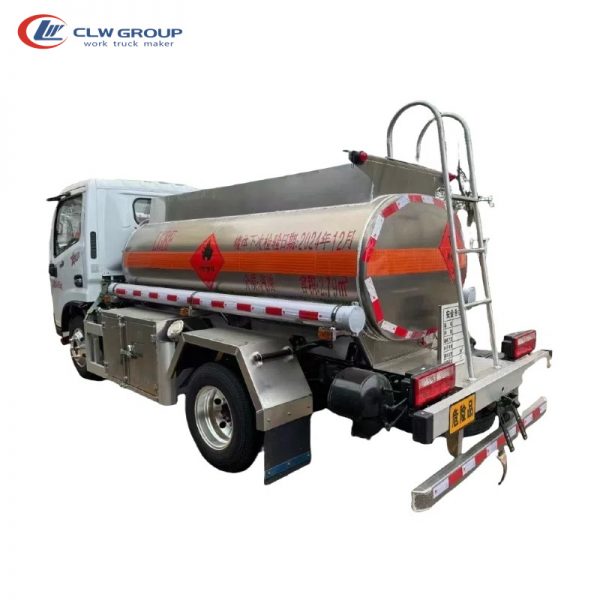Introduction
Work truck trailers play a crucial role in various industries, providing the necessary means to transport goods and materials efficiently. However, these vehicles also contribute significantly to air pollution, emitting harmful pollutants such as nitrogen oxides (NOx), particulate matter (PM), and greenhouse gases (GHGs). As concerns about environmental sustainability and public health continue to grow, it is essential to address work truck trailer pollution control through the implementation of effective strategies and technologies.
This article aims to explore the current state of work truck trailer pollution, examine the environmental impact of these vehicles, and discuss potential solutions for reducing emissions and improving air quality. By highlighting innovative approaches and best practices, we can pave the way for a cleaner and more sustainable future.
The State of Work Truck Trailer Pollution
Work truck trailers, including semi-trucks, delivery vans, and construction vehicles, are a common sight on roads and highways around the world. These vehicles are essential for transporting goods over long distances and supporting various industries, such as logistics, construction, and agriculture. However, the diesel engines used in many work truck trailers are a significant source of air pollution, emitting a range of harmful pollutants that can have serious environmental and health impacts.
One of the primary pollutants emitted by work truck trailers is nitrogen oxides (NOx), which contribute to the formation of ground-level ozone and smog. NOx emissions can irritate the respiratory system, exacerbate lung conditions such as asthma, and contribute to the formation of fine particulate matter. Particulate matter (PM), another common pollutant emitted by work truck trailers, is a complex mixture of tiny particles that can penetrate deep into the lungs and cause a range of health problems, including respiratory and cardiovascular diseases.
In addition to NOx and PM, work truck trailers also emit greenhouse gases (GHGs) such as carbon dioxide (CO2) and methane (CH4). These gases contribute to climate change by trapping heat in the atmosphere and leading to global warming. As the transportation sector continues to grow, the emissions from work truck trailers are expected to increase, further exacerbating environmental challenges and climate change impacts.
Environmental Impact of Work Truck Trailer Pollution
The environmental impact of work truck trailer pollution is significant and wide-ranging, affecting air quality, public health, and ecosystem health. Poor air quality resulting from work truck emissions can lead to a range of health problems, including respiratory illnesses, cardiovascular diseases, and premature death. Vulnerable populations, such as children, the elderly, and individuals with pre-existing health conditions, are particularly at risk from the harmful effects of air pollution.
In addition to the health impacts, work truck trailer pollution can also have ecological consequences, affecting plant and animal species, water quality, and soil health. Emissions from work truck trailers can contribute to acid rain, which can harm forests, lakes, and aquatic ecosystems. Nitrogen deposition from NOx emissions can also lead to nutrient imbalances in soils and water bodies, affecting plant growth and biodiversity.
Furthermore, the contribution of work truck trailers to climate change through the emission of greenhouse gases poses a significant threat to the planet's ecosystems and natural resources. Rising global temperatures, more frequent extreme weather events, and sea-level rise are some of the consequences of climate change that can have far-reaching impacts on ecosystems, agriculture, and human societies.
Strategies for Work Truck Trailer Pollution Control
Addressing work truck trailer pollution requires a multi-faceted approach that incorporates various strategies and technologies to reduce emissions and improve air quality. From policy interventions to technological innovations, there are several ways to mitigate the environmental impact of work truck trailers and promote sustainable transportation practices. Some of the key strategies for work truck trailer pollution control include:
1. https://www.worktruckmaker.com/the-ultimate-guide-to-work-trucks/ : Implementing stringent emission standards and regulations for work truck trailers can help reduce harmful pollutants and greenhouse gas emissions. Regulatory measures, such as emission limits, vehicle inspection programs, and emission testing requirements, can incentivize the adoption of cleaner technologies and practices in the transportation sector.
2. Fuel Efficiency Improvements: Improving the fuel efficiency of work truck trailers can help reduce emissions of greenhouse gases and criteria pollutants. Technologies such as aerodynamic enhancements, low-rolling-resistance tires, and engine optimization can help improve fuel economy and decrease the environmental impact of work truck operations.
3. Alternative Fuels: Transitioning to alternative fuels such as biodiesel, natural gas, and electricity can help reduce the carbon footprint of work truck trailers and decrease emissions of harmful pollutants. Alternative fuels offer a cleaner and more sustainable energy source for transportation, promoting environmental stewardship and reducing reliance on fossil fuels.
4. Diesel Emission Reduction Technologies: Installing diesel emission reduction technologies, such as diesel particulate filters (DPFs) and selective catalytic reduction (SCR) systems, can significantly reduce emissions of particulate matter and nitrogen oxides from work truck trailers. These technologies can help improve air quality and protect public health by capturing and neutralizing harmful pollutants before they are released into the atmosphere.
5. Electrification and Hybridization: Electrifying work truck trailers through the use of battery-electric or fuel-cell-electric powertrains can eliminate tailpipe emissions and reduce the environmental impact of transportation operations. Hybridization, combining internal combustion engines with electric motors, can also improve fuel efficiency and reduce emissions, offering a transition pathway to zero-emission vehicles.
6. Fleet Management and Optimization: Implementing fleet management strategies, such as route optimization, idle reduction, and maintenance practices, can help reduce fuel consumption and emissions from work truck trailers. By optimizing vehicle operations and maintenance schedules, fleet managers can minimize environmental impacts and improve the overall efficiency of transportation operations.

Technologies for Work Truck Trailer Pollution Control
Advancements in technology are driving innovation in work truck trailer pollution control, offering new solutions and opportunities to reduce emissions and improve air quality. From engine upgrades to exhaust aftert...
[The article continues with a detailed examination of various technologies and strategies for work truck trailer pollution control, including case studies, real-world examples, and best practices for environmental sustainability.]
